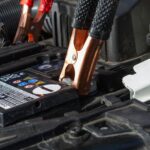Cathode Ray Tube (CRT) TVs are a large component of the electronic waste stream. CRT TVs contain equipment that can be reused, but the process in expensive. Companies offering TV recycling in Leeds provide a domestic solution for these devices with steps to expedite the process. Collect & Recycle follows three basic steps to recycling TVs.
TV Dismantling
The first process in TV recycling is to separate the CRT from the device. The glass tube has to be removed before the glass separation process can take place. After removing the bare CRT, the remaining materials are sent to recycling facilities where they are separated into plastic, copper, steel and printed circuit boards. These components can be sold to manufacture new products, and the bare CRT is taken for further recycling.
TV Glass Separation
The second step is separating the lead-bearing glass from the clean glass. The clean glass, usually of high quality, can be refurbished and reused in various applications, like fiberglass, automotive and lighting industries. The bearing glass is further recycles where the lead component is removed.
TV Glass Smelting
The third stage is similar to the glass separation process. The lead-bearing glass is heated and melted so the lead component can be extracted. After extraction, lead is formed into ingots and sold in markets. The by-product of this process is clean, new glass that can be employed in countless applications.
Conclusion
TV recycling is an expensive process. Though the components extracted provide financial benefits, the cost of recycling and extracting are higher than the benefits. You should still recycle nevertheless. Lead in CRT TVs release toxic emissions if disposed of in landfills. This increases the greenhouse gas emissions and pollutes the environment. Collect & Recycle aids in disposing of TVs in the greenest and most eco-friendly way possible in the Leeds area.

